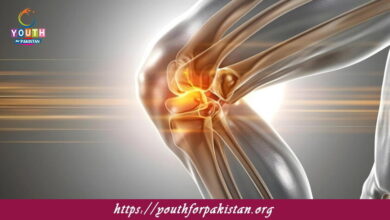Atomic Radii MDCAT MCQs with Answers

Welcome to the Atomic Radii MDCAT MCQs with Answers. In this post, we have shared Atomic Radii Multiple Choice Questions and Answers for PMC MDCAT 2024. Each question in MDCAT Chemistry offers a chance to enhance your knowledge regarding Atomic Radii MCQs in this MDCAT Online Test.
The atomic radius generally increases as you move:
a) From left to right across a period
b) Down a group
c) Up a group
d) From right to left across a period
Among the following elements, which has the smallest atomic radius?
a) Sodium (Na)
b) Magnesium (Mg)
c) Aluminum (Al)
d) Silicon (Si)
The atomic radius of an element is influenced by:
a) The number of protons
b) The number of neutrons
c) The number of electrons
d) All of the above
Which of the following elements has the largest atomic radius?
a) Fluorine (F)
b) Chlorine (Cl)
c) Bromine (Br)
d) Iodine (I)
The atomic radius of an element generally decreases as you move:
a) Down a group
b) Up a group
c) From left to right across a period
d) From right to left across a period
For isoelectronic species, the atomic radius:
a) Increases with increasing atomic number
b) Decreases with increasing atomic number
c) Remains constant
d) Varies unpredictably
The atomic radius of oxygen compared to sulfur is:
a) Larger
b) Smaller
c) The same
d) Not measurable
The atomic radius of a noble gas compared to its adjacent halogen is:
a) Larger
b) Smaller
c) The same
d) Not comparable
Which of the following has the largest atomic radius?
a) Carbon (C)
b) Nitrogen (N)
c) Oxygen (O)
d) Fluorine (F)
The atomic radius of an element generally:
a) Increases with increasing nuclear charge
b) Decreases with increasing nuclear charge
c) Remains constant with increasing nuclear charge
d) Varies unpredictably with nuclear charge
The atomic radius of potassium (K) compared to rubidium (Rb) is:
a) Larger
b) Smaller
c) The same
d) Not comparable
Which element has the smallest atomic radius in period 3?
a) Sodium (Na)
b) Magnesium (Mg)
c) Aluminum (Al)
d) Argon (Ar)
The atomic radius of an element in the third period is generally:
a) Larger than that in the second period
b) Smaller than that in the second period
c) The same as that in the second period
d) Unpredictable compared to the second period
The atomic radius of fluorine compared to neon is:
a) Larger
b) Smaller
c) The same
d) Not measurable
The atomic radius of an element generally:
a) Increases with increasing number of electrons
b) Decreases with increasing number of electrons
c) Remains constant with increasing number of electrons
d) Varies unpredictably with number of electrons
In a period, the element with the smallest atomic radius is:
a) The element with the highest atomic number
b) The element with the lowest atomic number
c) The element with the highest electron affinity
d) The element with the lowest ionization energy
The atomic radius of the central atom in a molecule can be affected by:
a) The bonding type
b) The molecular geometry
c) The surrounding atoms
d) All of the above
The atomic radius of elements in the lanthanide series compared to their corresponding main group elements is generally:
a) Larger
b) Smaller
c) The same
d) Unpredictable
For elements in the same group, the atomic radius generally:
a) Increases from top to bottom
b) Decreases from top to bottom
c) Remains constant
d) Varies unpredictably
The atomic radius of an element is influenced by:
a) The number of inner electrons
b) The effective nuclear charge
c) The size of the nucleus
d) All of the above
The atomic radius of an atom is:
a) Always larger than the covalent radius
b) Always smaller than the covalent radius
c) The same as the covalent radius
d) Not related to the covalent radius
The atomic radius of lithium compared to sodium is:
a) Larger
b) Smaller
c) The same
d) Unpredictable
The atomic radius of elements in the same period generally:
a) Decreases from left to right
b) Increases from left to right
c) Remains constant from left to right
d) Varies unpredictably from left to right
The atomic radius of an atom can be determined by:
a) X-ray crystallography
b) Mass spectrometry
c) NMR spectroscopy
d) UV spectroscopy
The atomic radius of an element in the p-block compared to an element in the s-block of the same period is generally:
a) Larger
b) Smaller
c) The same
d) Not comparable
The atomic radius of the noble gases compared to the halogens in the same period is:
a) Larger
b) Smaller
c) The same
d) Not measurable
In which of the following groups does the atomic radius increase as you move down the group?
a) Group 1
b) Group 2
c) Group 16
d) Group 18
Which element has the largest atomic radius in period 2?
a) Lithium (Li)
b) Beryllium (Be)
c) Boron (B)
d) Carbon (C)
The atomic radius of an element is largest when it has:
a) A high nuclear charge and few electron shells
b) A low nuclear charge and many electron shells
c) A high nuclear charge and many electron shells
d) A low nuclear charge and few electron shells
The atomic radius of an atom is affected by:
a) The distance between the nucleus and the valence electrons
b) The number of protons in the nucleus
c) The number of neutrons in the nucleus
d) All of the above
The atomic radius of boron compared to nitrogen is:
a) Larger
b) Smaller
c) The same
d) Not measurable
Which of the following has the largest atomic radius in period 4?
a) Potassium (K)
b) Calcium (Ca)
c) Scandium (Sc)
d) Zinc (Zn)
The atomic radius of an element increases as the number of:
a) Electrons increases
b) Protons increases
c) Neutrons increases
d) Nucleus size increases
The atomic radius of an element in the d-block compared to an element in the s-block of the same period is generally:
a) Larger
b) Smaller
c) The same
d) Unpredictable
Which of the following elements has the smallest atomic radius?
a) Neon (Ne)
b) Oxygen (O)
c) Carbon (C)
d) Fluorine (F)
The atomic radius of an element generally:
a) Increases with increasing number of electron shells
b) Decreases with increasing number of electron shells
c) Remains constant with increasing number of electron shells
d) Varies unpredictably with number of electron shells
The atomic radius of a metal element compared to a non-metal element in the same period is generally:
a) Larger
b) Smaller
c) The same
d) Not comparable
The atomic radius of sulfur compared to phosphorus is:
a) Larger
b) Smaller
c) The same
d) Unpredictable
The atomic radius of chlorine compared to bromine is:
a) Larger
b) Smaller
c) The same
d) Not measurable
In the periodic table, the atomic radius of elements typically:
a) Decreases as you go from left to right across a period
b) Increases as you go from left to right across a period
c) Remains constant across periods
d) Increases as you go from top to bottom within a group
If you are interested to enhance your knowledge regarding Physics, Chemistry, Computer, and Biology please click on the link of each category, you will be redirected to dedicated website for each category.





